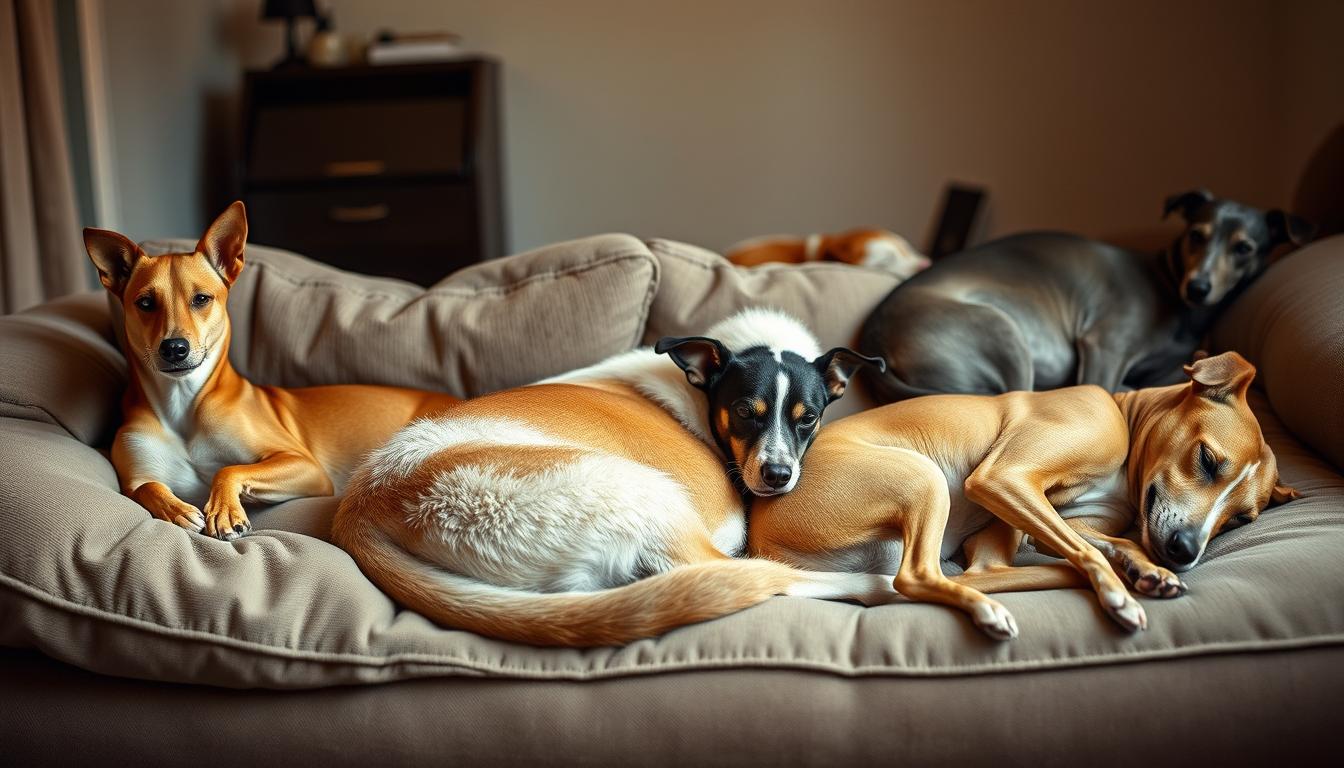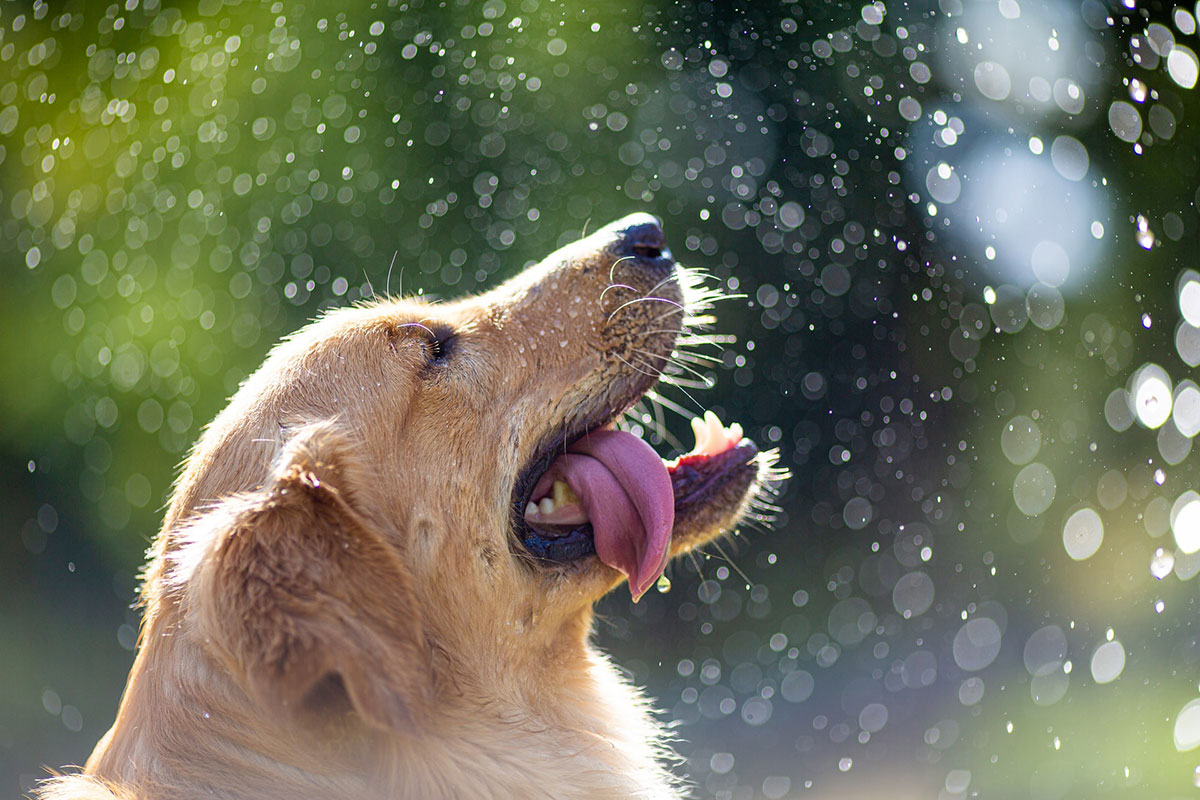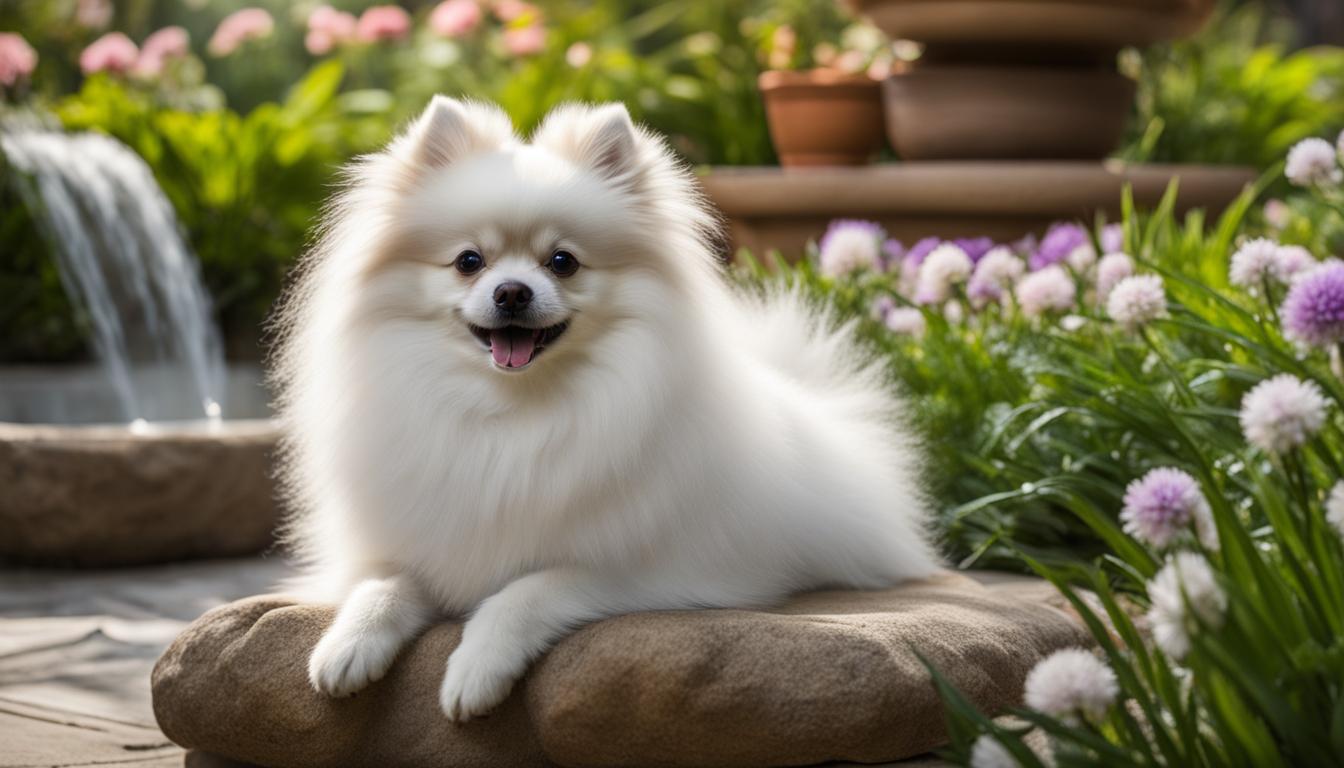Many dog owners want a quiet home. If you’re fed up with barking, you’re not alone. People look for quiet dog breeds that are loving but not loud.
At BarkingBatty, we get how hard it is with too much barking. Our founder’s own dogs led her to help others. This article will look at the least barking dogs that are great pets for those who want peace.
We’ll count down the top dog breeds known for being quiet. You’ll learn about their traits and what they need.
Key Takeaways
- Discover the benefits of quiet dog breeds for a peaceful living environment.
- Learn about the characteristics of the least barking dogs.
- Explore the top dog breeds that are perfect for those who value serenity.
- Understand the needs of these breeds to ensure a happy and healthy pet.
- Get insights into the best breeds for dog owners who want to minimize barking.
Why Some Dogs Bark Less Than Others
Dogs bark at different rates, influenced by their breed, training, and personality.
The breed of a dog greatly affects its barking. Some breeds are naturally quieter because of their history and purpose. For example, guard dogs and hunting dogs tend to bark more. On the other hand, dogs bred for companionship are often quieter.
Training also plays a big role in how much a dog barks. Dogs trained to bark less or on command bark less than untrained ones. Positive training can help a dog bark less.
A dog’s personality also affects its barking. Just like people, dogs have unique personalities. Some are naturally quieter or less likely to bark. Their upbringing, environment, and genetics shape their personality and barking habits.
| Factor | Influence on Barking Behavior |
|---|---|
| Breed Characteristics | Breeds originally bred for companionship tend to be quieter. |
| Training | Consistent training can reduce unnecessary barking. |
| Individual Temperament | Reserved dogs tend to bark less due to their natural disposition. |
Understanding these factors helps dog owners see why their pets bark differently. Recognizing the impact of breed, training, and temperament allows owners to address unwanted barking.
Benefits of Choosing a Quiet Dog Breed
Choosing a quiet dog breed brings more than just less noise. It makes for a more peaceful home. For those living in apartments or shared spaces, a quiet dog is essential.
One key benefit of quiet dog breeds is they’re perfect for apartment living. They need less activity and exercise, keeping them calm and quiet. This is great for city folks or those with small outdoor areas.
Quiet dogs also mean less noise, which is perfect for homes with noise rules. They also tend to be more relaxed, creating a calm home atmosphere.
| Benefit | Description | Advantage |
|---|---|---|
| Apartment Living | Ideal for city dwellers or those with limited outdoor space | Less disturbance to neighbors |
| Reduced Noise Disturbance | Less barking contributes to a quieter environment | More peaceful living conditions |
| Harmonious Household | Less barking breeds tend to have a more relaxed temperament | More serene home atmosphere |
In summary, the advantages of less barking breeds make them a great choice for many. They offer a quieter, more peaceful home life.
Top 10 Dog Breeds That Bark The Least 2025: Our Selection Criteria
We picked the top 10 quietest dog breeds for 2025 by studying their traits and getting expert advice. We looked at several important factors that affect how much a dog barks.
The main factors were breed characteristics like temperament, size, and purpose. We focused on breeds that are calm and not too energetic.
Owner testimonials and reviews were also key. What dog owners say helps us understand how different breeds bark in real life.
We also talked to dog experts and trainers. Their expert opinions helped us make smart choices.
The criteria we used were:
- Breed temperament and disposition
- Size and energy level of the breed
- Historical purpose of the breed
- Owner feedback and testimonials
- Expert opinions from dog trainers and behaviorists
We wanted to give a list that’s both detailed and trustworthy. This helps people choose the right quiet dog breed for 2025.
Our detailed method makes sure the list is useful and dependable. It helps future dog owners make a good choice.
The Naturally “Barkless” Breeds: Basenji and Shiba Inu
The Basenji and Shiba Inu are special dog breeds known for not barking much. They have unique sounds and independent personalities.

These dogs are famous for their yodeling sounds instead of barking. Their bodies are built differently, which affects how they make sounds.
They use a variety of sounds and body language to talk. It’s important to understand these ways of communication.
Exercise Needs and Living Requirements
Both breeds need regular exercise. The Basenji is very active and needs lots of exercise. The Shiba Inu is also active but can do less strenuous activities.
- Basenji: Needs daily runs or long walks.
- Shiba Inu: Benefits from daily walks and playtime.
They need enough space to move around. They can live in apartments if they get enough exercise and mental stimulation.
Temperament and Quiet Alertness
The Basenji and Shiba Inu are alert and watchful. They are quiet but pay close attention to their surroundings, making them good watchdogs.
They are independent and strong-willed. They can be shy around strangers, so early socialization is key.
Training Considerations for This Independent Breed
Training these dogs takes patience and consistency. They can be stubborn, so a firm but gentle approach is best.
- Establish clear boundaries and rules.
- Use positive reinforcement techniques.
- Be patient and consistent.
Knowing their unique personalities and needs is essential for successful training.
Gentle Giants with Quiet Dispositions: Great Dane and Newfoundland
Great Danes and Newfoundlands are big but quiet and gentle. They are perfect for families and those who want a calm pet.
These dogs don’t bark much. They only bark when they need to, like to warn their owners.
Several factors contribute to their quiet disposition: they were bred to be companions, not watchdogs. This means they don’t bark as much.
Space Requirements Despite Their Quiet Nature
Great Danes and Newfoundlands need lots of space. A large, securely fenced yard is essential for them to move around and play.
Before getting one, think about if you have enough room for a big dog.
Calm Temperament and Quiet Confidence
These dogs are calm and confident. They are a pleasure to be around.
They are also great with kids because they are patient and kind.
Grooming and Care for This Quiet Companion
Great Danes and Newfoundlands need regular grooming. Regular brushing and occasional bathing keep their coats clean and healthy.
Also, be ready for health issues like hip dysplasia and heart problems.
Apartment-Friendly Quiet Companions: Cavalier King Charles Spaniel and French Bulldog
Living in an apartment means finding a dog that doesn’t bark too much. The Cavalier King Charles Spaniel and French Bulldog are perfect. They are quiet, making them great for apartment living.
The Cavalier King Charles Spaniel is known for being gentle and loving. They don’t bark much, which is good for apartments. The French Bulldog is also quiet. It’s laid-back and easy to adapt, which helps it not bark a lot.
Health Considerations for This Quiet Breed
These breeds have health issues to watch out for. Cavalier King Charles Spaniels might have heart problems. French Bulldogs can have breathing issues because of their face shape. Taking them to the vet regularly is key to keeping them healthy.
| Breed | Health Considerations | Grooming Needs |
|---|---|---|
| Cavalier King Charles Spaniel | Heart issues, ear infections | Moderate |
| French Bulldog | Respiratory issues, allergies | Low |
Communication Without Excessive Barking
These dogs have ways to talk without barking a lot. Cavalier King Charles Spaniels use body language. French Bulldogs show their feelings with their faces.
Climate Sensitivity and Indoor Living
Both breeds don’t like very hot or cold weather. Cavalier King Charles Spaniels like it cozy. French Bulldogs get hot easily because of their face. They do well indoors where it’s always comfortable.
For more info on quiet dogs for apartments, check out Good Housekeeping’s article on the best apartment dogs. It has lots of helpful tips on breeds that love apartment life.
Swift and Silent: Greyhound and Whippet
The Greyhound and Whippet are fast but quiet dogs. They are great for many homes. They’ve learned to live well in homes, showing they’re adaptable.
Greyhounds and Whippets were made for speed. But they’ve moved from racing to living with families easily. They are calm, making them good for everyone.
They are easy-going, fitting into less active lives. But, they still need regular exercise.
Exercise Needs Despite Their Calm Nature
Greyhounds and Whippets are calm but need to stay active. Short, fun runs are enough for them.
They should run in safe places. Their chase instinct is strong.
Reserved Personality and Minimal Barking
These dogs bark very little. They are quiet and calm, perfect for apartments or quiet homes.
They make homes peaceful. They’re great for those who want a calm friend.
Sensitivity and Training Approaches
Greyhounds and Whippets are sensitive. They do best with gentle, positive training. Harsh methods upset them.
Training them needs patience and consistency. This helps them become good pets.
Dignified and Reserved: Akita and Chinese Shar-Pei
The Akita and Chinese Shar-Pei are known for their dignity and reserve. These traits come from their long history and cultural importance. They are loved for their unique looks and noble qualities.

The Akita comes from Japan and is seen as a symbol of loyalty and honor. The breed’s quiet strength shows its role as a hunting partner and guardian. The Chinese Shar-Pei, with its unique wrinkles, has a long history in ancient China. It was valued for its protective nature and loyalty.
Canine historians say, “The Akita’s loyalty is unwavering, much like the Shar-Pei’s protective instincts, making them both revered companions.” These breeds have a quiet strength rooted in their cultural heritage.
Socialization Needs Despite Low Barking
Despite being reserved, Akitas and Chinese Shar-Peis need socialization. This helps them stay calm in different situations. Early exposure to various environments and people is important for their temperament.
Socialization is key to helping these breeds understand and navigate complex social cues. This reduces the chance of unnecessary aggression or fear-based reactions.
Alert Yet Quiet Demeanor
Akitas and Chinese Shar-Peis are alert and watchful. Their quiet nature makes them great companions for those who want a vigilant yet unobtrusive pet.
- Akitas are naturally protective of their families.
- Chinese Shar-Peis are known for their loyalty and alertness.
Special Care Requirements for This Unique Breed
Both breeds have special care needs. Akitas need regular exercise and a balanced diet. Chinese Shar-Peis need regular grooming to prevent skin issues from their wrinkles.
Understanding and meeting these special care needs is crucial for their well-being and happiness.
Living Harmoniously With Your Quiet Canine Companion
Creating a calm home is key when you live with quiet dogs. Knowing their needs and giving them the right care makes your home peaceful for both you and your dog.
For harmonious living, give your quiet dog regular exercise and mental play. Use gentle games and interactive toys to keep them engaged.
When caring for quiet breeds, keep things calm and quiet. Make sure their living space is comfy. This helps your dog feel at home and happy.
By following these easy tips, you can have a quiet and peaceful home with your dog. Living with quiet dogs is rewarding. With the right care, you and your dog can have a strong and loving bond.






